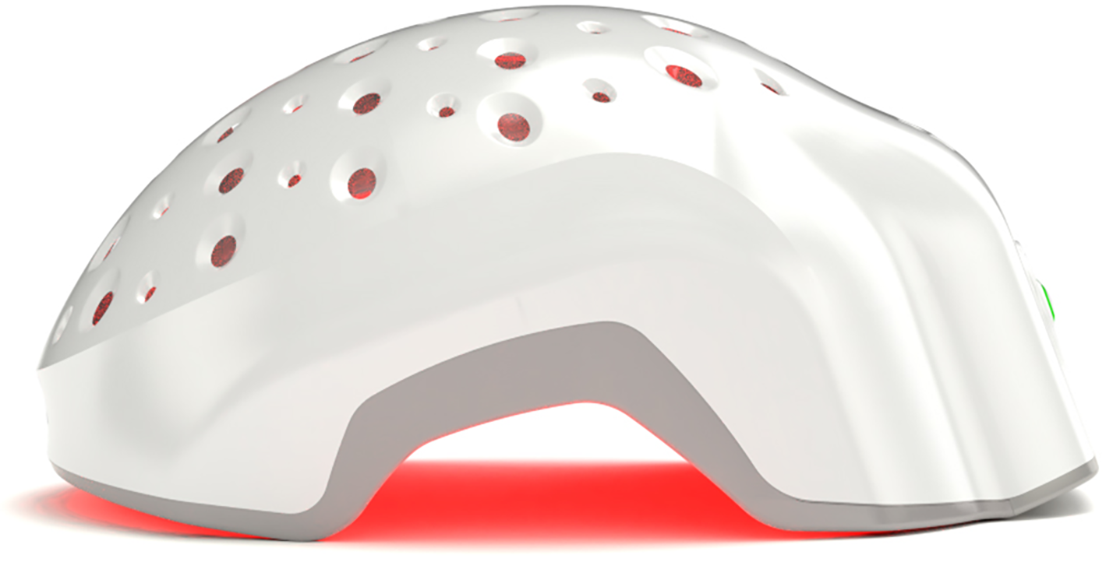The environment might be wreaking more havoc on your hair than you think. It's not just harsh shampoos, hot styling tools, or skipping that weekly deep conditioning—air pollution could be a secret saboteur in the fight for fuller, healthier hair. Yes, those pollutants lurking in the atmosphere might be doing more than just clogging your pores; they could be giving your hairline some serious grief.
Studies have shown that exposure to airborne pollutants, like particulate matter (PM), heavy metals, and toxins, can lead to inflammation, oxidative stress, and yes—hair loss. Essentially, air pollution can weaken the scalp's defenses, affecting hair follicles, reducing hair density, and slowing growth. So, when you’re scratching your head wondering why your hair is thinning, air pollution hair loss might be the unexpected answer.
Sure, it sounds extreme—polluted air causing your hair to thin out? But when you think about it, pollution is everywhere: city smog, industrial fumes, car exhaust, and even smoke from wildfires. The scalp is like the soil for your hair, and when that soil is tainted, it’s no wonder the hair doesn’t thrive. If pollution can affect your lungs, skin, and even your mood, why wouldn’t it affect your hair, too?
What pollutants are the culprits, and how exactly do they trigger hair loss? And most importantly, is there anything you can do to protect those precious locks from environmental damage?
Understanding Air Pollution
Air pollution is more than just a foggy skyline; it’s an invisible cocktail of harmful substances that taint the air we breathe. Common pollutants include particulate matter (PM2.5 and PM10), nitrogen dioxide (NO2), sulfur dioxide (SO2), and volatile organic compounds (VOCs). These contaminants are released from a variety of sources: vehicle emissions, industrial processes, construction dust, and even everyday products like aerosol sprays and hairsprays. With rising levels of urban pollution due to increasing global urbanization, exposure to these pollutants is, unfortunately, part of daily life for many.
What’s often overlooked is the effect air pollution has beyond the lungs—it impacts your skin and hair too. Studies have shown how these pollutants contribute to premature skin aging, respiratory issues, and now, it appears they have a hand in hair thinning and loss as well. So, while smog-filled cities may be part of the modern backdrop, the side effects on your scalp could make your hair think twice before sticking around.
How Does Air Pollution Cause Hair Loss?
Air pollution isn’t just clogging up your lungs; it’s sneaking its way onto your scalp and setting the stage for hair loss. In fact, hair fall due to pollution is becoming a topic that researchers and health professionals are taking more seriously. It’s not just about the grime and dust that settles on your hair – it's about what those airborne toxins are doing to your scalp, follicles, and even your hormonal balance.
Let's break down the key effects of air pollution on hair health, and how they team up to push your hair from healthy to hesitant.
1. Damages Hair Follicles
Your hair follicles are like little engines powering hair growth. Now, imagine these engines being clogged with pollutants like dust, smoke, and heavy metals. Airborne toxins and fine particulate matter can settle on your scalp, penetrate hair follicles, and disrupt the natural hair growth cycle.
The result is weak follicles that struggle to grow hair as they should, causing hair loss and thinning. It’s like trying to grow a garden in polluted soil – the seeds are there, but they’re just not thriving.
2. Causes Scalp Inflammation
Pollution isn’t just an assault on hair follicles; it’s an attack on the scalp itself. Toxins and particulate matter can irritate the scalp, leading to inflammation. Now, an inflamed scalp isn’t exactly fertile ground for hair growth. Inflammation can reduce blood flow to hair follicles, limiting their access to nutrients and oxygen. As a result, the weakened follicles become more prone to shedding, and hair struggles to grow back as thick and healthy as it should.
3. Oxidative Stress
Air pollutants don’t stop at irritation – they generate free radicals. These molecules cause oxidative stress, damaging hair cells at the very core. Oxidative stress disrupts the normal cycle of hair growth, causing hair shafts to become thinner and more fragile, and leading to premature cell aging. Essentially, your hair’s defenses are being attacked from the inside out, making it susceptible to breakage and loss. This isn't just about a bad hair day – it's your hair literally fighting to survive.
4. Scalp Irritation
Beyond inflammation, pollutants can trigger a dry, itchy scalp. Chemicals in the air, from car exhaust to industrial fumes, act as scalp irritants. The result is dryness, itching, and an increase in flaky scalp conditions like dandruff. A dry and irritated scalp isn’t able to effectively hold onto hair, leading to an increase in hair shedding and overall poor hair health. It’s like trying to keep a plant healthy in dry, cracked soil – not exactly the best environment for growth.
5. Hormonal Imbalance
Certain pollutants, especially those found in industrial waste and vehicle emissions, are classified as endocrine disruptors. In simple terms, these chemicals can interfere with your hormones, throwing off your body’s natural balance. Hair growth is highly sensitive to hormones – so when they’re out of whack, hair loss can follow. Elevated levels of DHT (dihydrotestosterone), a hormone linked to hair thinning and loss, can occur when your body is dealing with hormonal imbalance triggered by pollutants.
6. Scalp Dehydration
Airborne toxins can have a drying effect on your scalp and hair, stripping away natural oils. These oils are essential for keeping both the hair and scalp hydrated, flexible, and strong. When they’re depleted, your scalp dries out, hair becomes brittle, and breakage becomes more common.
A dehydrated scalp also can’t provide the necessary nutrients to hair follicles, making it tough for hair to grow thick and resilient.
Learn More: How Can Dehydration Lead to Hair Loss?
7. Weakens Hair Structure
Prolonged exposure to pollutants breaks down the hair’s protein structure, specifically keratin – the very building block of your hair. Weakened keratin makes hair dull, fragile, and prone to split ends. And let’s be honest – nobody is clamoring for weak, lifeless hair. This breakdown in protein structure leads to compromised hair strength, causing more hair to shed over time.
Tips to Prevent Hair Loss from Air Pollution
When it comes to protecting your hair from air pollution, you don’t have to just grin and bear the fallout (literally). There are practical, science-backed ways to reduce hair loss from toxic air exposure and keep your locks looking their best.
Wash Hair Regularly
You wouldn’t let dirt sit on your skin, so why let pollutants stick around on your scalp?
Washing hair every day causes hair loss is just a myth, infact, regular hair washing helps clear away pollutants, toxins, and sebum buildup. But here’s the kicker – over-washing can be just as damaging as not washing enough. The secret lies in balance: opt for a mild, sulfate-free shampoo that cleanses without stripping away your hair's natural oils, keeping your scalp refreshed and hydrated.
Use Anti-Pollution Hair Products
Anti-pollution hair products aren’t just clever marketing; they can play a crucial role in creating a protective shield around your strands and scalp. Look for products that contain antioxidants (like vitamins C and E), which neutralize free radicals, or natural extracts (like ginseng and green tea) known for their soothing, protective properties.
Sprays, leave-in conditioners, and hair masks designed for pollution defense can help form a physical barrier against airborne toxins while adding moisture.
Moisturize and Hydrate
Air pollution loves a dry scalp – it’s an easy target for irritation and damage. Keeping your scalp and hair well-moisturized is a smart move to keep those pollutants at bay. Natural oils such as coconut oil, argan oil, or jojoba oil not only hydrate your scalp but also help lock in moisture and strengthen the hair cuticle. Remember: hydrated hair is happy hair – and more resilient to environmental stressors.
Cover Your Hair Outdoors
Sometimes, the best defense is a good defense. Hats, scarves, and hoodies might not be the height of fashion, but they can be a lifeline for your hair health when pollution levels are high. Covering your hair minimizes direct exposure to harmful airborne particles and reduces the risk and signs of scalp dehydration and damage.
Low-Level Laser Therapy (LLLT)
Low-Level Laser Therapy is no longer science fiction. Studies have shown that LLLT can stimulate hair follicles, improve scalp health, and even promote hair regrowth by enhancing cellular activity within the follicles.
Theradome is a hair growth helmet that uses LLLT to stop hair loss and promote hair growth. It uses medical-grade lasers to deliver light energy directly to the hair follicles. This process helps activate the hair follicles, encouraging new hair growth and preventing further hair loss. Using Theradome regularly can help keep your hair healthy and strong, even in polluted environments.
Conclusion
While air pollution may not hold a monopoly on causing hair loss, its impact on your scalp and hair is anything but negligible. The complex cocktail of pollutants in our environment – from particulate matter to chemical toxins – can weaken hair follicles, trigger inflammation, and accelerate shedding. But here’s the good news: understanding the link between air pollution and hair loss means you can take practical steps to mitigate its effects. From a simple shampoo routine to choosing the right protective measures, you can preserve your scalp's health and, in turn, your hair’s integrity. And remember – taking control of your hair health in the midst of all that pollution is nothing short of a breath of fresh air.






















